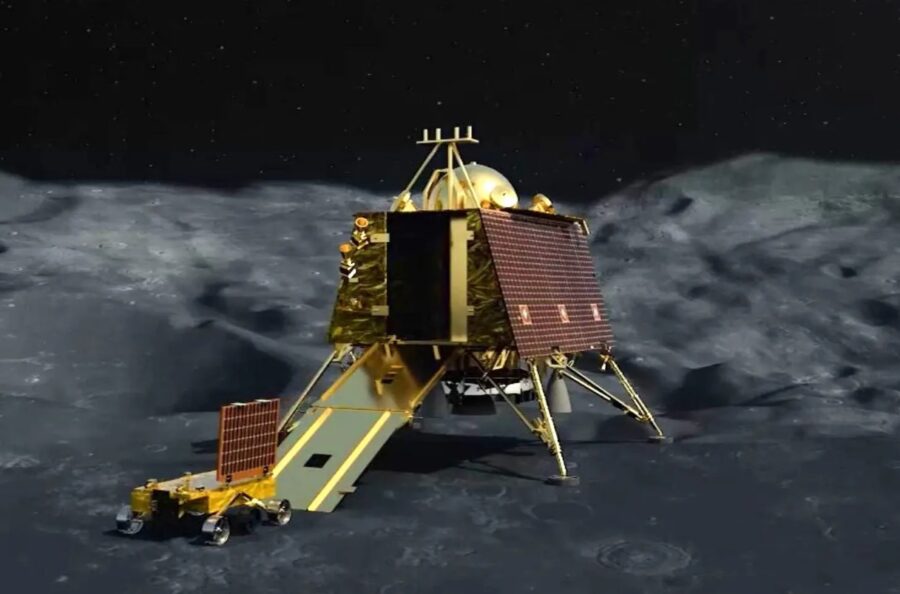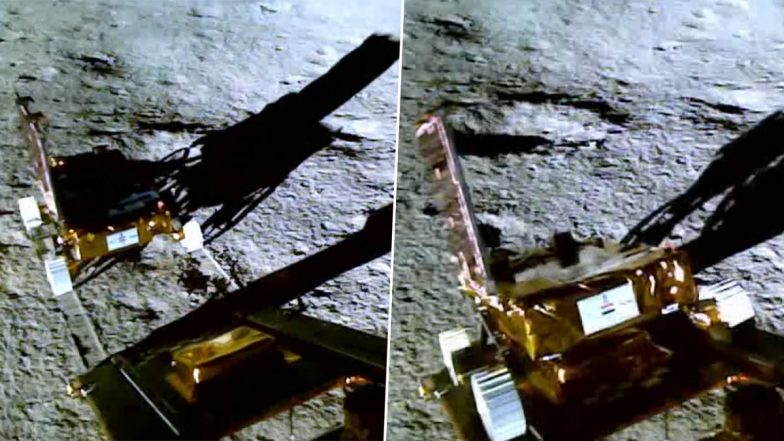Chandrayaan-3: India’s Third Mission to the Moon
India has achieved a historic milestone in space exploration by accomplishing its inaugural lunar landing, marking a pivotal moment in its cosmic endeavors. The third lunar mission, Chandrayaan-3, conducted by India, involves a lander named Vikram and a rover named Pragyan, which achieved a touchdown near the moon's southern pole on August 23, 2023.
Initiated on July 14, 2023, from the Satish Dhawan Space Center in Sriharikota, India, the Chandrayaan-3 mission was launched aboard the Launch Vehicle Mark-III (LVM3) rocket. After entering the moon's orbit on August 5, the spacecraft executed a sequence of orbital maneuvers to lower its altitude in preparation for the landing.
The landing posed a formidable challenge due to the rugged and shadowed nature of the lunar southern pole, characterized by craters and boulders that posed potential threats to the lander's safety. The autonomous navigation of the lander was paramount as it had to navigate obstacles while maintaining essential communication with the ground station and the orbiter.
Precisely at 12:32 UTC (6:02 p.m. IST) on August 23, the lander flawlessly touched down at coordinates approximately 70 degrees south latitude and 23 degrees east longitude. The chosen landing site was strategically situated for its scientific promise, closely linked to permanently shadowed areas with the potential to contain water ice, and other volatile compounds.
Around four hours after the touchdown, the rover was deployed. This six-wheeled vehicle, weighing approximately 27 kg, can travel up to 500 meters from the lander. Outfitted with two cameras, a Laser-Induced Breakdown Spectroscopy (LIBS) instrument, and an Alpha Particle X-ray Spectrometer (APXS) instrument, the rover's primary goals encompass an in-depth study of lunar surface composition, mineralogy, and morphology.
Equally significant, the lander carries four scientific payloads: the Radio Anatomy of Moon-Bound Hypersensitive ionosphere and Atmosphere (RAMBHA) instrument, Chandra’s Surface Thermo-physical Experiment (ChaSTE) instrument, an instrument for Lunar Seismic Activity (ILSA), and a Laser Retroreflector Array (LRA). The lander's core objectives include temperature measurements of the lunar surface, assessment of plasma density, monitoring seismic activity, and reflecting laser signals to Earth.
Envisaged to last approximately one lunar day, equivalent to around 14 Earth days, the lander and rover's operational window will be confined to the lunar day, while they will enter hibernation during the frigid lunar nights when temperatures plummet below -150 degrees Celsius. Simultaneously, the orbiter will remain in lunar orbit for a minimum of one year, serving as a relay for communication and data transmission between the lander, rover, and Earth.
Chandrayaan-3 epitomizes India's remarkable accomplishment, a moment of pride for its citizens, and a testament to its technological and scientific aspirations in lunar exploration and beyond. Furthermore, it contributes significantly to global insights into the moon's origins, evolution, and resource potential.
The mission extends beyond its lunar objectives, acting as an inspiration for future generations of scientists, engineers, and explorers. The mission symbolizes India's unwavering commitment to innovation and resilience in the face of challenges, epitomizing its pursuit of ambitions.
A collaborative endeavor, Chandrayaan-3 involves international partners and stakeholders. NASA provided the lander's Laser Retroreflector Array (LRA) as part of an agreement to advance lunar laser ranging and navigation capabilities. Collaboration with the French space agency CNES led to the development of the rover's LIBS instrument, enabling the exchange of scientific knowledge and data. Support from the European Space Agency (ESA), the Japan Aerospace Exploration Agency (JAXA), and other entities underscore the mission's collaborative essence.
Chandrayaan-3 stands as a significant stride in India's lunar exploration journey, which embarked with Chandrayaan-1 in 2008. The initial mission uncovered crucial findings, including the presence of water molecules on the lunar surface and an attenuated lunar atmosphere.
India's lunar exploration roadmap continues with upcoming missions, such as Chandrayaan-4 and Chandrayaan-5. Chandrayaan-4, set for launch in 2025, will encompass an orbiter, lander, rover, and sample return capsule, with the goal of collecting and transporting lunar soil samples for analysis on Earth. Anticipated in 2027, Chandrayaan-5 will incorporate an orbiter, lander, rover, and human-rated capsule, aspiring to send Indian astronauts to the moon for the first time.
These lunar missions align with India's broader vision of asserting its position as a leading spacefaring nation, contributing to the peaceful utilization of outer space for the betterment of humanity. Coupled with past achievements such as Mangalyaan, Astrosat, Cartosat, and Gaganyaan, India's accomplishments in space stand as a source of pride and inspiration, particularly for the burgeoning generation interested in STEM fields.
India's cosmic achievements mirror its culture and values, encompassing curiosity, creativity, cooperation, and courage. Chandrayaan-3 transcends its lunar mission status, embodying the essence of India's diversity, unity, and national identity. A testament to India's potential, determination, and purpose, the mission encapsulates the nation's aspirations, dreams, and destiny.
Chandrayaan-3 is not just a mission to the moon, but also a mission to the heart and soul of India. It is a mission that celebrates India’s diversity, unity, and identity. It is a mission that showcases India’s potential, passion, and purpose. It is a mission that symbolizes India’s hope, dream, and destiny.
🚀🌕🇮🇳
Credit | References:
1: https://timesofindia.indiatimes.com/indias-chandrayaan-3-is-a-spectacular-feat-it-can-explore-water-on-the-moon-for-a-colony/articleshow/103071524.cms
2: https://www.indiatvnews.com/fact-check/fact-check-old-video-of-nasa-apollo-mission-going-viral-as-visuals-of-moon-captured-by-chandrayaan-3-2023-08-25-888936
3: https://www.republicworld.com/science/space/chandrayaan-3-success-live-pm-modi-to-meet-isro-scientists-in-bengaluru-on-august-26-liveblog.html
4: https://en.wikipedia.org/wiki/Chandrayaan-3
5: https://www.space.com/chandrayaan-3-indian-moon-mission-rover
Thanks for reading.



Comments
Post a Comment